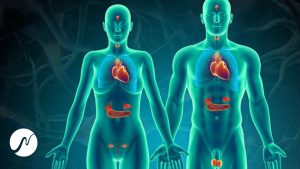
Biophysics, at its core, is the interdisciplinary field that merges the principles of physics with the study of biological systems. It delves into the intricate mechanisms and phenomena occurring within living organisms. This marriage of physics and biology offers unique insights into the fundamental workings of life, from the molecular scale to complex biological systems. physics is pivotal in elucidating biological processes, ranging from the behavior of individual molecules to the dynamics of entire ecosystems.
Pioneers in Biophysics
Biophysics has a rich history, with notable figures such as Rosalind Franklin, Max Delbrück, and Francis Crick, who contributed significantly to unraveling the mysteries of life through the lens of physics. Their pioneering work laid the groundwork for modern biophysical research and paved the way for groundbreaking discoveries.
Milestones in Biophysics Research
From the discovery of the structure of DNA to the elucidation of protein folding mechanisms, biophysics has witnessed numerous milestones that have revolutionized our understanding of biological systems. These milestones highlight the interdisciplinary nature of physics and its profound impact on scientific progress.
Fundamental Principles of Biophysics
Biophysics operates on the premise that biological phenomena can be explained using the principles of physics. It explores the physical properties of biological molecules, the dynamics of cellular processes, and the behavior of organisms within their environments. By applying concepts such as thermodynamics, kinetics, and quantum mechanics, biophysicists unravel the intricate mechanisms governing life.
Tools and Techniques in Biophysics
Advancements in technology have been instrumental in propelling biophysics forward. Cutting-edge techniques such as X-ray crystallography, atomic force microscopy, and single-molecule imaging allow researchers to probe biological systems with unprecedented precision and resolution. These tools provide invaluable insights into the structure, function, and dynamics of biological molecules.
Impact of Technology on Biophysics Research
The synergy between technology and biophysics has led to groundbreaking discoveries across various domains, from elucidating the structure of biomolecules to unraveling the complexities of cellular signaling pathways. Technological innovations continue to drive progress in physics, opening new avenues for exploration and discovery.
Biophysics finds applications in diverse fields, ranging from medicine to environmental science. Its insights into the fundamental principles governing life have profound implications for addressing global challenges and improving human health.
Medical
In medicine, plays a pivotal role in drug discovery, diagnostics, and therapeutic interventions. From designing targeted drug delivery systems to elucidating the molecular mechanisms of disease, physics contributes to advancing healthcare and improving patient outcomes.
Environmental Applications
Biophysics also offers valuable insights into environmental processes and ecosystems. By studying the physical principles underlying biological systems, biophysicists contribute to understanding environmental dynamics, biodiversity conservation, and sustainable resource management.
Biophysics in Everyday Life
Biophysics permeates everyday life in ways often unnoticed but profoundly impactful. From the biological processes occurring within our bodies to the agricultural practices shaping our food supply, influences various aspects of human existence.
Biophysics and Human Health

In healthcare, informs medical diagnostics, imaging techniques, and therapeutic strategies, enhancing our ability to diagnose and treat diseases effectively. By unraveling the complexities of biological systems, holds the promise of personalized medicine tailored to individual patient needs.
Biophysics and Agriculture
In agriculture, contributes to improving crop yields, optimizing irrigation strategies, and mitigating the impact of environmental stressors on agricultural productivity. By understanding the physical principles governing plant growth and development, biophysicists help ensure food security and sustainable agriculture practices.
Challenges and Future Directions
Despite its advancements, biophysics faces challenges such as integrating complex datasets, elucidating the dynamics of biological networks, and bridging the gap between theory and experiment. Addressing these challenges requires interdisciplinary collaboration and innovative approaches.
Promising Areas of Future Research
The future of biophysics holds promise in areas such as systems biology, computational modeling, and synthetic biology. By leveraging emerging technologies and interdisciplinary approaches, biophysicists aim to unravel the complexities of life and address pressing global challenges.
Conclusion
Biophysics represents the convergence of physics and biology, offering a unique perspective on the fundamental principles governing life. From unraveling the structure of biomolecules to understanding complex biological systems, physics continues to push the boundaries of scientific knowledge. As we delve deeper into the fascinating world of physics, we uncover new insights into the intricacies of life and pave the way for innovative solutions to some of humanity’s most pressing challenges.
FAQs
What is physics, and why is it important?
physics is an interdisciplinary field that combines the principles of physics with the study of biological systems. It is important because it offers unique insights into the fundamental workings of life, from the molecular scale to complex biological systems.
How has physics contributed to medical research?
physics has contributed to medical research by elucidating the molecular mechanisms of disease, developing new diagnostic techniques, and designing targeted drug delivery systems.
What are some challenges facing physics today?
Some challenges facing physics today include integrating complex datasets, elucidating the dynamics of biological networks, and bridging the gap between theory and experiment.
How does physics impact everyday life?
physics impacts everyday life by informing medical diagnostics and treatments, improving agricultural practices, and contributing to environmental conservation efforts.
What are some promising areas of future research in physics?
Some promising areas of future research in physics include systems biology, computational modeling, and synthetic biology.









